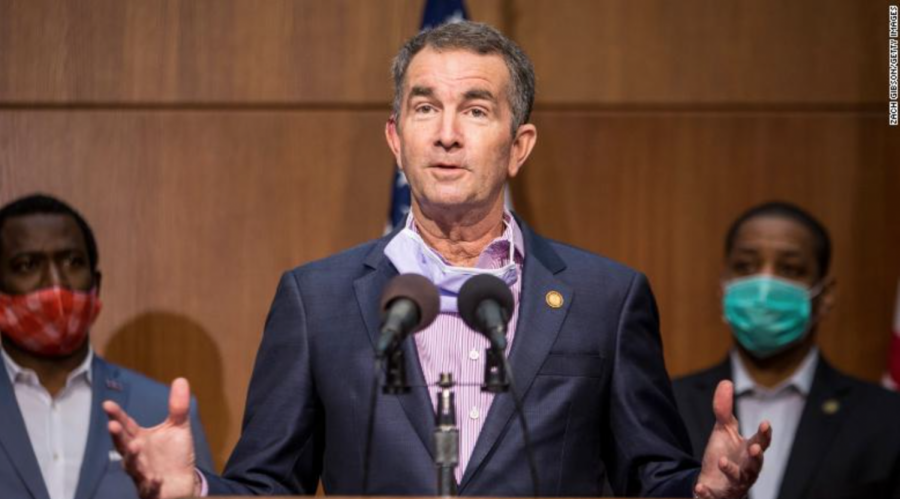Governor announces Virginia schools reopening plans
photo courtesy of Zach Gibson/Getty Images
Standing on a podium, Virginia Governor Ralph Northam delivers the latest Virginia reopening plans.
June 11, 2020
As the school year resumes next fall, learning will look significantly different from before. Six feet apart at all times and faces covered by masks may become our new in-school reality.
On Tuesday, May 10, Virginia Governor Ralph Northman released plans for reopening Virginia schools next year. These guidelines are provided with the notion that individual schools can enforce more restrictions as well. The plan includes three phases to ease into the new normalcy, following the Centers for Disease Control and Prevention (CDC) guidelines to minimize risk while also taking into account the learning lost due to COVID-19 closures in Spring. Schools will maintain social distancing regulations, and possibly require masks and daily health screenings. Each school district will be required to submit proposals to the Virginia Department of Education outlining how they plan to take into account the risks contributed by the virus before entering phase two and three. To account for lost learning, public school districts will also have to submit a proposal including strategies they plan to implement for this purpose and what they plan to do if public health conditions call for distance learning to resume.
Phase one entails prioritizing use of distance learning over in-person learning. In-person learning will be utilized for students with disabilities and special education services. Students will only be allowed to attend in-person schooling if the Individualized Education Program (IEP) allows it. Students can access school buildings only for crucial purposes such as a secure testing environment. Each classroom and bus will have a set capacity of 10 or less people, with one person per seat every other row; only siblings will be allowed to sit next to each other. No extracurricular activities or sports will be permitted.
Phase two will allow students in preschool through third grade and students learning English to attend in-person school. Buses will maintain the same regulation as in phase one. Extracurricular activities can commence such that they follow social distancing guidelines. Sports will also be allowed to start with many constraints.
The last phase returns to in-person schooling for all students with many restrictions, some of which are listed above. School districts are advised to keep classes separate and place limitations of up to 50 people in each outdoor activity. Communal places such as the cafeteria will be closed, or allowed through staggered use.
Although this plan factors in a smooth transition to in-person schooling, it can be agreed that the overall process of school will look much different for everyone involved.






![A group of juniors play “Clash Royale” on their phones during lunch. Lunch is the only time when phones are allowed to be out. “I think once we adapt to it, it's not going to be something we miss because [for] everyone moving forward, that'll have been the policy [since] middle school,” DNA science and biology teacher Aubrie Holman said.](https://www.tjtoday.org/wp-content/uploads/2025/09/IMG_6621-2-e1758016994220-300x239.jpeg)